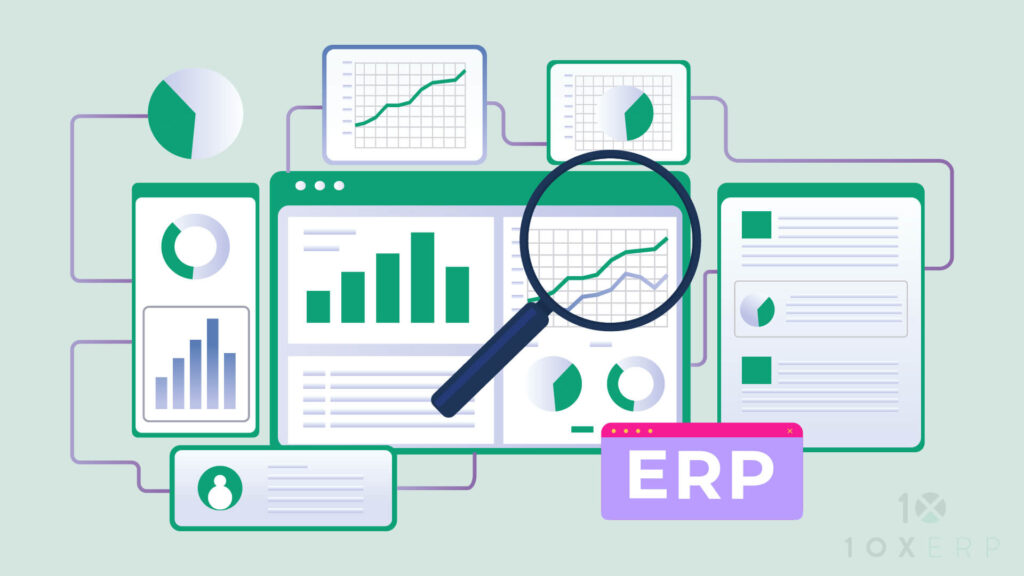Summary
- ERP systems facilitate data-driven strategies, enhancing sales and revenue through market trend analysis and customer behavior insights.
- Leveraging ERP tools can optimize marketing strategies, improving growth and profitability.
- 10X ERP stands ready to guide businesses in leveraging ERP functionalities, fostering a prosperous, data-driven future.
Securing a competitive advantage in the ever-evolving industrial distribution landscape requires embracing innovative strategies. The modern business environment increasingly relies on data analytics, a cornerstone in developing successful strategies. It is a rich source of insights into market trends, customer preferences, and operational efficiencies. By leveraging data analytics capabilities, industrial distribution businesses can craft informed decisions that spur growth and bolster profitability. In this context, we aim to show how ERP systems facilitate data-driven insights to enhance sales and revenue.
The Importance of Data Analytics

Data analytics is a cornerstone for business success, offering a lens into emerging market trends and customer behaviors. ERP systems are at the heart of this transformation, which serve as sophisticated platforms that centralize various business processes into a unified hub. This centralization facilitates the seamless collection, analysis, and utilization of data across different departments, fostering a cohesive and informed approach to business management.
ERP systems go beyond mere integration; they encapsulate a wealth of information that can be leveraged to craft insightful business strategies. These systems provide a comprehensive view of business operations, from monitoring customer purchasing patterns to analyzing sales trends, offering a panoramic view that aids in identifying growth opportunities and areas for improvement.
Integrating data analytics within ERP systems enables predictive analytics, allowing businesses to anticipate market trends and customer preferences proactively. This foresight is instrumental in developing strategies that keep businesses a step ahead of their competitors, fostering agility and maintaining a competitive edge in the ever-evolving market dynamics.
Inventory Management: A Strategic Advantage

ERP systems are equipped with features that enable real-time inventory management, a tool that has become indispensable in the current business climate. This functionality empowers businesses to maintain a vigilant eye on their inventory levels, acting as a safeguard against stockouts and overstock situations, both of which can have detrimental effects on business operations. Stockouts, for instance, can create a ripple effect of challenges, notably leading to missed sales opportunities and dissatisfied customers. This scenario often translates to a loss of revenue and, potentially, a tarnished brand image.
Conversely, overstocking presents its own set of challenges, including escalated holding costs and a bottleneck in cash flow, which can stifle the growth potential of a business. Fortunately, ERP systems are adept at identifying slow-moving items in the inventory, guiding businesses in tweaking their procurement strategies accordingly. This adjustment not only helps in averting financial pitfalls but also paves the way for channeling capital into more lucrative avenues, fostering a healthy and profitable business ecosystem.
E-commerce Integration: A Gateway to Enhanced Sales

E-commerce has become a vital sales channel for businesses in the industrial distribution sector. ERP systems are crucial in facilitating seamless integration with well-established e-commerce platforms. This integration offers many benefits, including offering customers an enhanced shopping experience. Features such as real-time inventory updates, accurate order tracking, and personalized marketing strategies are just a few ways ERP systems can boost customer satisfaction, sales, and revenue. Moreover, the automation of the order management process by ERP systems reduces errors. It ensures timely order fulfillment, heightening customer satisfaction and channeling resources into other revenue-generating activities.
Business Intelligence for Strategic Planning

Harnessing the capabilities of ERP systems can be a game-changer for businesses aiming to stay ahead in the market dynamics. These systems facilitate a deep dive into market trends and customer behaviors, providing a rich source of data-driven insights. Meticulously analyzing sales data, they help enterprises identify lucrative opportunities and craft strategic decisions that amplify sales and revenue.
Leveraging the analytical tools embedded within ERP systems can significantly enhance the effectiveness of marketing campaigns. These tools assist businesses in refining their strategies to achieve maximum impact. By adopting marketing initiatives based on real-time data and insights, businesses can align their strategies with market demands, ensuring resonance with their target audience and a substantial return on investment, fostering a cycle of sustained growth and profitability.
Conclusion
ERP systems are an invaluable resource for industrial distribution businesses looking to enhance sales and revenue through data-driven insights. These systems, offering functionalities like real-time inventory management, seamless e-commerce integration, and robust business intelligence tools, empower businesses to make informed decisions that foster growth and profitability. As you traverse the complex landscape of industrial distribution, it’s important to remember that data analytics is a formidable ally in your journey.
At 10X ERP, we prioritize your business growth and are always here to assist you in navigating the intricacies of ERP systems. Feel free to reach out with any questions or concerns; our team of experts is committed to providing insightful responses and guidance.
